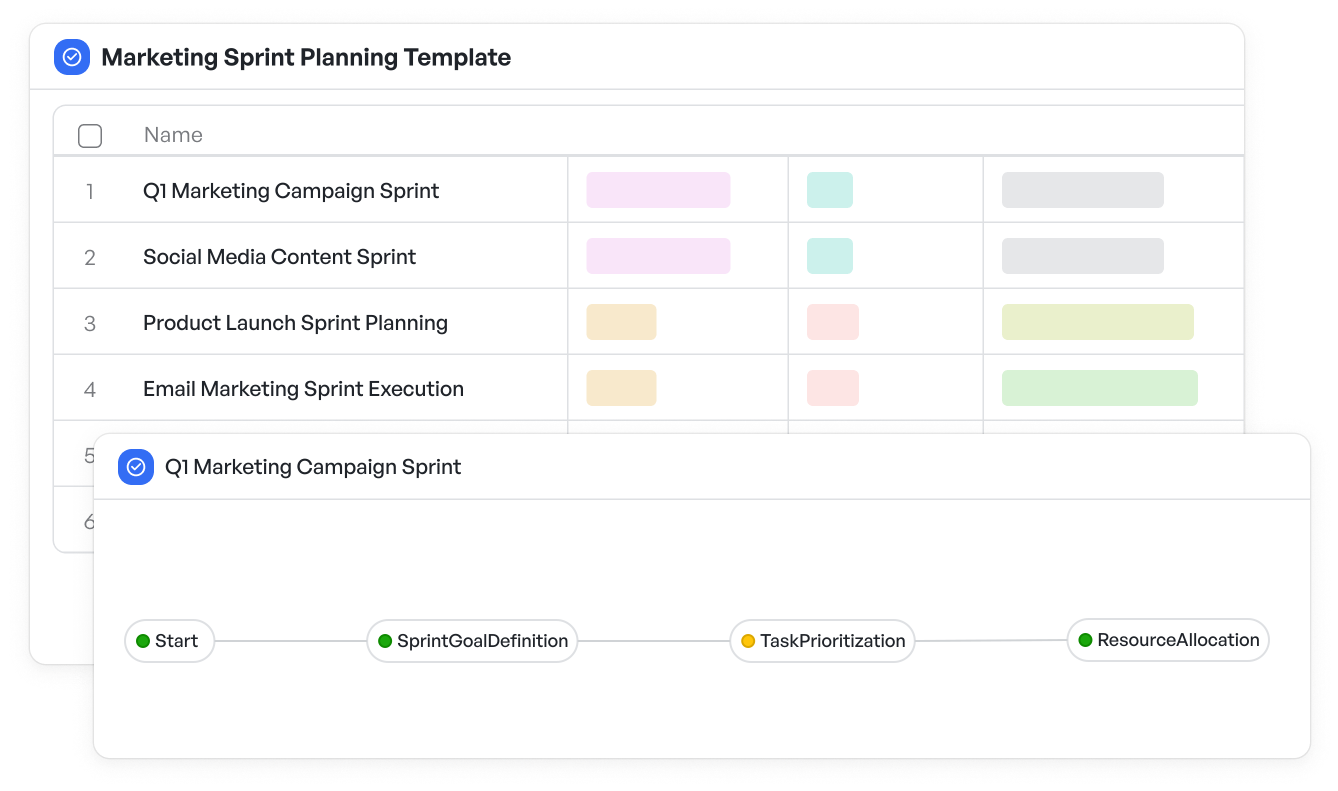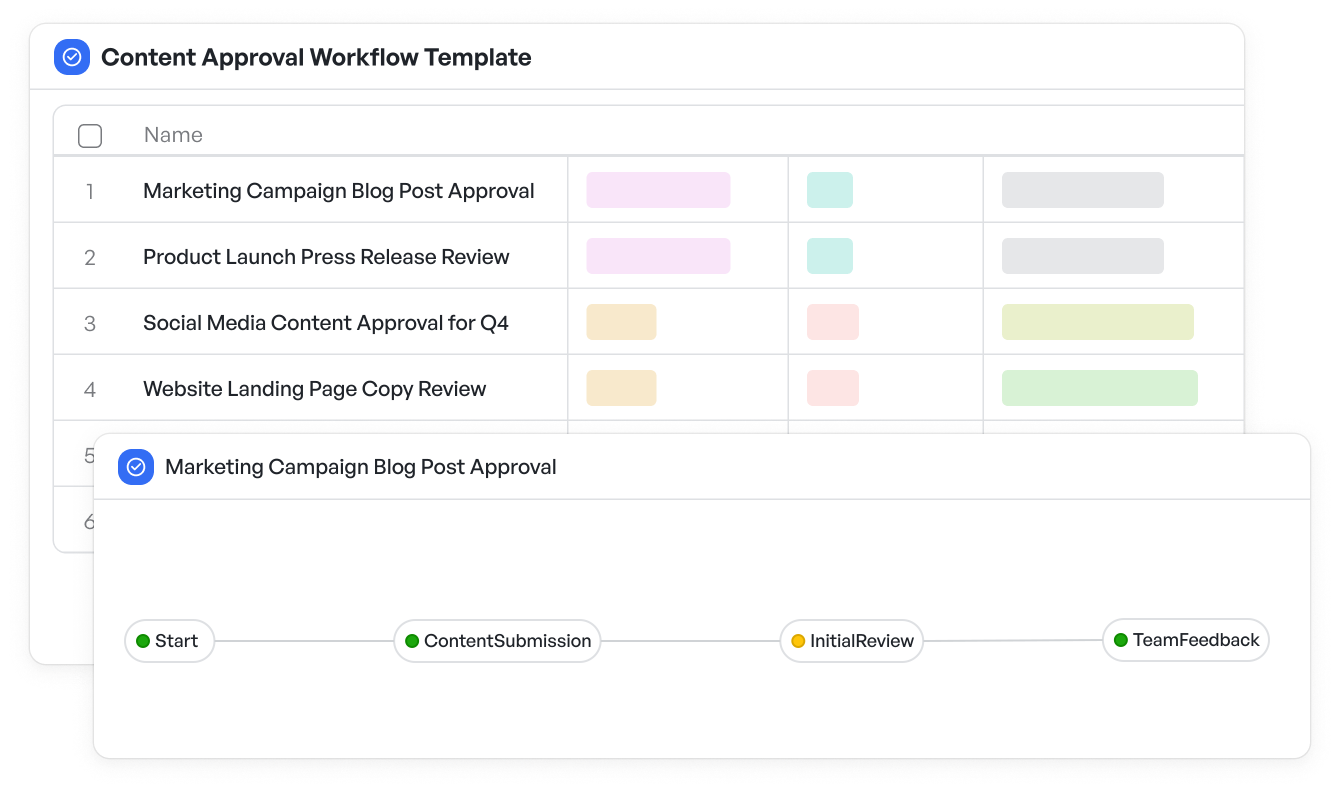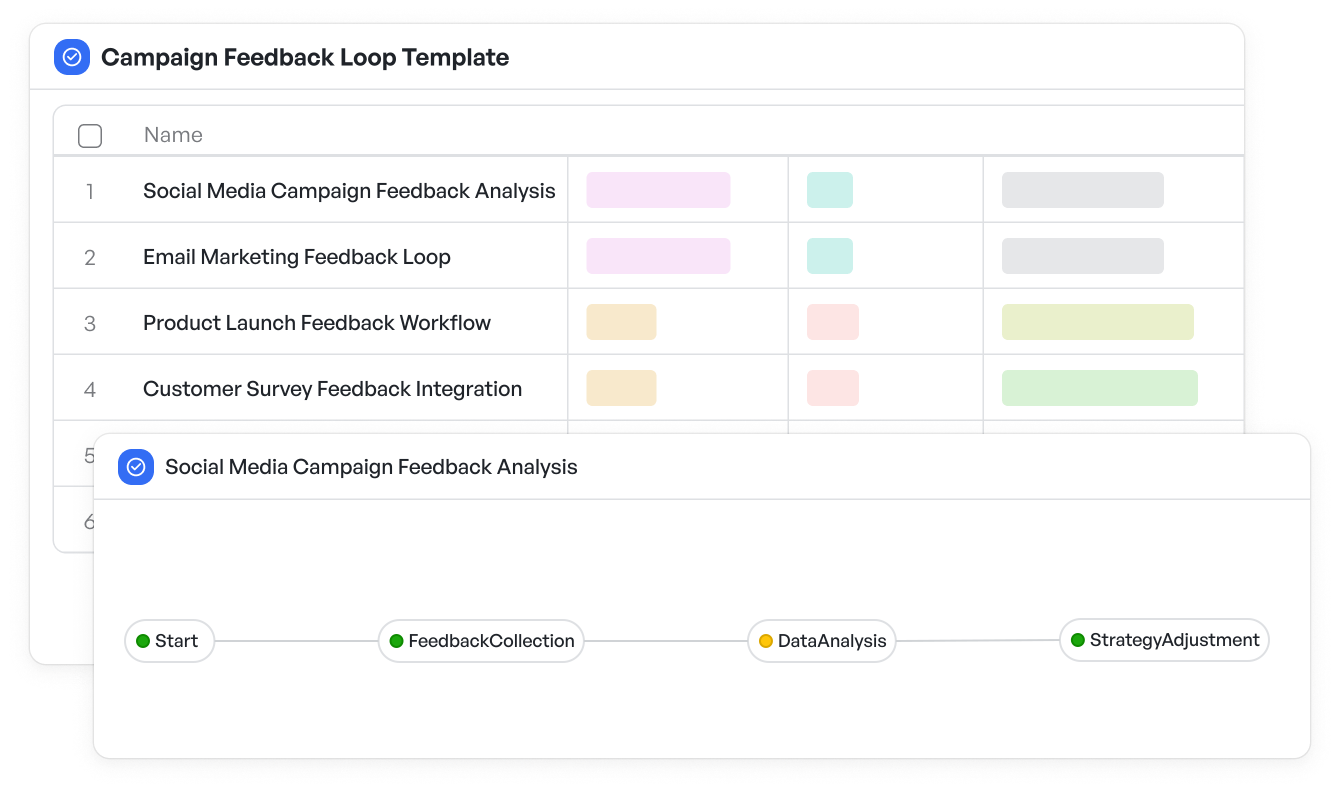How to Implement Feature-Driven Development in Marketing

Marketing teams at mid-market and enterprise software companies face increasing complexity in managing campaigns, launches, and product marketing efforts. Multiple stakeholders, tight deadlines, and rapidly changing priorities demand a structured yet flexible approach to keep work aligned and on schedule.
Feature-driven development (FDD), an Agile methodology originally designed for software projects, offers a practical framework to help marketing teams break down large initiatives into manageable features, track progress clearly, and collaborate effectively.
This article explores how marketing leaders and project managers can apply feature-driven development in marketing to improve visibility, accountability, and delivery speed for complex campaigns.
What is Feature-Driven Development in Marketing?
Feature-driven development is an Agile process model centered on defining and delivering client-valued features in short, iterative cycles. While traditionally used in software development, feature-driven development’s focus on clear, incremental deliverables and structured planning is highly applicable to marketing projects where multiple activities must come together to drive business outcomes.
In marketing, features might represent individual campaign elements such as email series, content pieces, event coordination, or creative assets. FDD helps teams decompose complex marketing programs into these distinct features, enabling better prioritization and more predictable delivery.
Why Do We Need Feature-Driven Development in Marketing Teams?
Marketing projects often involve cross-functional collaboration between content creators, designers, analysts, product teams, and external agencies. Without a structured approach, work becomes siloed, timelines slip, and priorities blur.
Adopting feature-driven development in marketing offers several advantages:
- Improved clarity: Each marketing feature has clear ownership, requirements, and acceptance criteria.
- Faster feedback: Iterative cycles allow teams to test and refine campaign elements quickly.
- Better risk management: Breaking projects into features makes delays or blockers easier to isolate and address.
- Enhanced stakeholder alignment: Transparent tracking shows progress on each feature, reducing surprises.
- Adaptability: Agile sprints accommodate changing priorities or new insights from market feedback.
 Streamline collaboration and align teams effectively with the cross-team collaboration framework template
Streamline collaboration and align teams effectively with the cross-team collaboration framework templateSuggested Read:👉Best Marketing Project Management Software in 2025
5 Key Steps to Implement Feature-Driven Development in Marketing Teams
Applying feature-driven development in marketing requires some adaptation from traditional software practices. The following steps provide a roadmap to getting started:
1. Develop an Overall Marketing Domain Model
Start by creating a high-level map of your marketing campaign or program, outlining the key components and their relationships.
This might include channels (email, social media, events), content types, target segments, and key deadlines. This model helps visualize the scope and interdependencies of marketing features.
2. Build a Detailed Feature List
From the domain model, break down the campaign into a comprehensive list of client-valued features. Examples include “launch email drip campaign,” “create a webinar landing page,” or “design a product brochure.”
Prioritize features based on business goals, deadlines, and dependencies.
3. Plan by Feature
Create a release plan that sequences the features logically. Assign short-term goals and set timelines that align with product launches, events, or seasonal campaigns to ensure effective execution. Plan feature delivery in iterative cycles, allowing for adjustments as feedback comes in.
Using templates like the marketing sprint planning template and campaign timeline visualization template can help map these sequences visually, making it easier for teams to track deadlines, dependencies, and progress.
 Plan and track your marketing sprints seamlessly to keep campaigns on schedule and teams aligned
Plan and track your marketing sprints seamlessly to keep campaigns on schedule and teams aligned4. Design by Feature
Detail the requirements and acceptance criteria for each feature. This step ensures that content creators, designers, and other contributors understand exactly what success looks like and can coordinate effectively.
Employing the content approval workflow template supports clear collaboration and sign-off processes during this phase.
 Simplify content reviews and ensure timely approvals with a clear, organized workflow
Simplify content reviews and ensure timely approvals with a clear, organized workflow5. Build by Feature
Execute each feature in iterations, testing and refining deliverables before moving to the next feature. Frequent reviews help catch issues early and keep campaigns on track.
Incorporate the campaign feedback loop template and campaign retrospective timeline template to systematically gather insights and apply learnings to future features or campaigns.
 Capture insights continuously to refine campaigns and improve marketing outcomes
Capture insights continuously to refine campaigns and improve marketing outcomesHow Feature-Driven Development in Marketing Leverages Visual Templates for Clarity
Managing complex marketing initiatives benefits from tools that visualize workflows clearly. Templates designed for feature-driven development in marketing can map each feature’s progress through stages like ideation, creation, review, and launch.
Templates such as the campaign handoff checklist template ensure smooth transitions between teams or external agencies, reducing risk of missed tasks.
Other useful templates include:
- Marketing team capacity planner template to balance workload across members
- Marketing budget reallocation template for flexible spending adjustments
- Social listening response timeline template to schedule engagement actions based on audience feedback
- Marketing Compliance Checklist Template for regulatory alignment
 Facilitates clear communication and accountability during campaign transitions to maintain consistency and avoid delays
Facilitates clear communication and accountability during campaign transitions to maintain consistency and avoid delaysTemplates enable every team member and stakeholder to see the full picture of campaign status—what’s done, what’s in progress, who’s responsible, and upcoming deadlines. Such transparency helps teams stay coordinated and reduces the need for excessive status meetings.
Best Practices for Successful Adoption of Feature-Driven Development in Marketing
To successfully implement feature-driven development in marketing, it’s important to follow key practices that foster collaboration, communication, and gradual adoption across your teams.
- Engage stakeholders early: Collaborate across departments to define clear feature requirements and priorities. The cross-departmental collaboration template can formalize this process.
- Communicate frequently: Use regular check-ins and reviews to maintain alignment and adapt plans. Leverage the marketing dashboard update template for up-to-date status reporting.
- Start small: Pilot feature-driven development on a critical campaign before rolling out across larger programs.
- Use the right tools: Select project management platforms that support visual workflows and iterative tracking.
- Train the team: Ensure all members understand feature-driven development principles and their roles in the process.
Accelerate Marketing Success with Feature-Driven Development in Marketing and Visual Workflows
Adopting feature-driven development in marketing enables teams to manage complex projects with greater precision and flexibility. By breaking down initiatives into clear, manageable features, teams can deliver results faster, respond quickly to feedback, and maintain a strong focus on client-valued outcomes.
Visual workflows and specialized templates provide the clarity needed to track progress, assign responsibilities, and meet deadlines consistently.
This structured approach minimizes miscommunication, accelerates decision-making, and enhances collaboration across stakeholders, making it especially valuable for mid-market and enterprise marketing teams navigating fast-changing priorities.
Transform marketing project management with visual tools designed for feature-driven success—Try Meegle today.
The world’s #1 visualized project management tool
Powered by the next gen visual workflow engineRead More
Check All BlogsStart creating impactful work today



